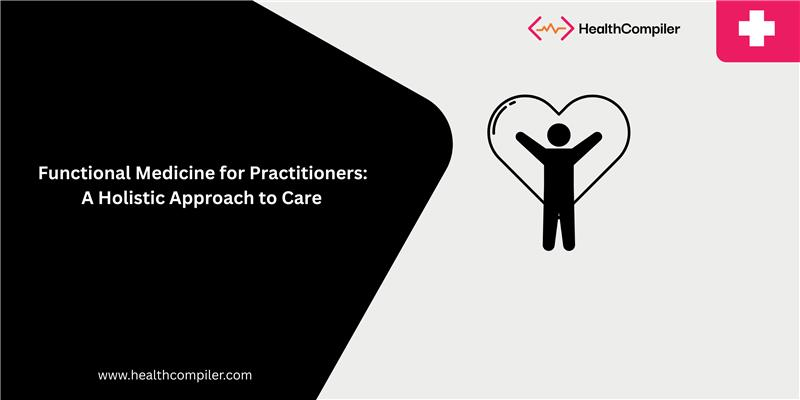Exploring Functional Medicine: A Holistic Model for Modern Practice

In every clinic, there are patients who don’t fit neatly into boxes.
They’ve been to several specialists. They’ve tried the standard treatments. Their lab results might look “fine,” but they still feel off. As a practitioner, you know there’s more to the story.
This is where functional medicine comes in.
It’s not about picking sides or abandoning the tools you trust. It’s about expanding your lens, taking a closer look at the whole person and the systems that shape their health.
So what is functional medicine, and how does it work in practice?
Let’s walk through the essentials.
What is Functional Medicine?
Functional medicine is a way of approaching health that focuses on root causes, not just symptoms.
It looks at how systems in the body interact: digestion, hormones, the immune system, mental health, and more. It asks why things are out of balance, not just what’s going wrong.
For many practitioners, functional medicine offers a way to work differently. It’s less about checklists and more about patterns. Less about rushing through visits and more about understanding the full story.
It’s not a replacement for conventional care. It’s a complement that helps you dig deeper, especially with complex or chronic cases.
How Does Functional Medicine Work?
The functional medicine approach starts with curiosity.
Instead of focusing on a single symptom or diagnosis, it asks: What’s connected here? What changed in this person’s life or body? What are we missing?
A typical functional medicine intake includes:
- A detailed history that covers lifestyle, stress, nutrition, sleep, and past exposures
- Labs that may go beyond the standard panels, including inflammation, gut health, hormones, or nutrients
- A care plan that’s built around the patient’s story, not just their labs
It’s not just about giving more tests or supplements. It’s about stepping back, seeing the bigger picture, and creating care plans that adapt as your patient’s health evolves.
The Benefits of Functional Medicine for Clinicians
Functional medicine isn’t only valuable for patients. It can also make practice more rewarding for providers.
Here’s how:
- You spend more time listening and less time cycling through surface-level fixes
- You connect patterns across systems that others might miss
- You get to co-create care with patients, which builds trust and long-term engagement
- You can often help patients who’ve been stuck in a cycle of temporary solutions
- You bring meaning back to the work because you’re offering holistic care.
It’s especially helpful for complex cases like fatigue, gut issues, autoimmune concerns, hormonal shifts, brain fog, and more.
Functional Medicine vs Conventional Medicine: Not Either Or
Let’s clear something up. Functional medicine isn’t better or alternative. It’s just different.
Conventional medicine is powerful, especially for acute care, emergencies, diagnostics, and surgical needs. Functional medicine works well for chronic conditions, prevention, and long-term support.
When used together, they strengthen each other.
That’s why many practices are blending both. It gives you flexibility in how you think, diagnose, and care for people.
Is It Time to Bring Functional Medicine Into Your Practice?
If you find yourself asking deeper questions,
If you want to spend more time with patients,
If you’re looking for a model that fits your values,
Functional medicine might be worth exploring.
You don’t have to overhaul your entire practice to get started. You can begin with longer visits, deeper intakes, or more personalized care plans. You can decide how much you want to integrate and how it fits into your flow.
What matters is that it supports the kind of care you want to give.
Final Thoughts
Functional medicine is about context, connection, and curiosity.
It’s not a trend. It’s a return to asking better questions and looking at the whole picture. For many practitioners, it brings energy back into the work and creates space for more meaningful care.
If you’re ready to go beyond protocols and reconnect with why you started practicing in the first place, this model might offer the perspective you’ve been looking for.
No hype. No extremes. Just care that pays attention.



